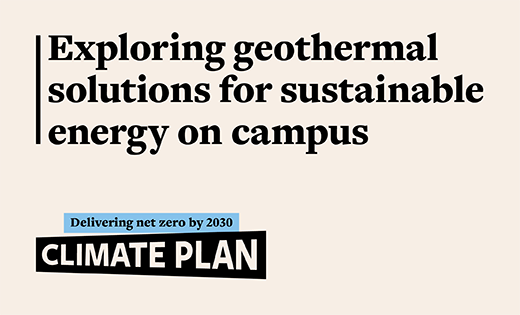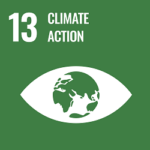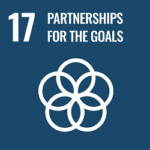Living Lab Exploring Geothermal Energy on Campus

Work is starting at a number of locations on campus to test the potential to use geothermal heat to help us heat our campus buildings. It's a really exciting Living Lab project that's part of the University's Net Zero Delivery Plan and contributes towards the Delivering Net Zero principle of our Climate Plan - but what exactly is it and why are we doing it?
We've spent some time talking to the experts involved in the work - including the Estates team leading the project, Head of Net Zero James Dixon-Gough, and the academic team supporting the work which incudes Professor Fleur Loveridge, Dr David Barns and Dr Emma Bramham. Read on to find out more about what's going on!
What is the purpose of the work?
As part of our Climate Plan, it is crucial that we reduce the emissions associated with heating and powering our campus. This makes up two thirds of the emissions that we need to eliminate by 2030. As well as delivering emissions reductions, we have an opportunity to use our work to deliver net zero, to explore and research innovative solutions that have benefit not just for us at the University of Leeds, but locally, nationally and globally.
The geothermal Living Lab project is a key part of our Net Zero Delivery Plan for campus. Living Labs are collaborative projects that test and research sustainable solutions, using our campus as a test bed. This project aims to find out how and to what extent we can use natural heat from below campus to contribute towards our heating needs on campus. It involves drilling several test boreholes into the ground below campus, and if successful, this approach would provide a clean, sustainable source of heat that reduces our reliance on both fossil fuels and electricity.
One thing that's particularly exciting about this work is that if it is possible to use geothermal heat below our campus, it is likely that the same approach will work at other locations across Leeds and the wider city region, which share a similar rock structure below ground.
What do we mean by geothermal heat?
You might already be familiar with air source heat pumps, which are increasingly being used to provide heating for homes and businesses. Air source heat pumps work a little like a reverse refrigerator – they take heat from the air and use a relatively small amount of electricity to multiply this to higher temperatures that can be used to feed central heating systems. The technology can work even when the outside air temperature is very low but they have to work harder at very low air temperatures. This is of course when we most need our heating systems.
While the air temperature above ground can vary depending on the season and weather, the temperature underground is stable, even in the depths of winter. That means that this natural heat from the rocks below our feet can be used to feed a heat pump and provide a more efficient and consistent source of heat than air source heat pumps alone. It can also be used in reverse during summer, returning heat from buildings to the ground.
In some places around the world the rocks and water underground can be at very high temperatures. You can see this yourself in places like hot springs where the water reaches the surface naturally. These locations are a rich source of geothermal energy. While we don’t have this level of heat below our campus in Leeds, the lower but stable temperatures can still be enough to provide a fantastic energy resource for heating buildings. This is sustainable and clean energy; as long as renewable electricity is used to power the system then it doesn’t produce any greenhouse gases.
How do you access the heat from below the ground?
There are two main ways you can access the heat from below the ground, and the work on campus will test both.
One option involves laying pipes in the ground. When you pump water through these pipes it is heated by the surrounding rocks and returns to the surface warm. The warm water is then used by a heat pump to deliver heat at temperature high enough to use in the buildings. Depending on how the pipes are laid out this approach can require lots of space which can be tricky in an urban environment. This approach is known as a ‘closed loop system’.
The second option involves tapping into existing water stored underground in aquifers (think of them as underground lakes). A borehole is drilled into the aquifer at one location and a water pipe put in place to take warm water out of the ground. The pipe runs the water above ground to a second borehole, where it is returned to the aquifer. During this journey, a heat exchanger takes the heat from the water and feeds it into a heat pump to bring it up to the right temperature for a heating system. Importantly, the water from underground never leaves the pipe, and is immediately returned to the ground through the second borehole. This means the water cannot be contaminated, and there is no change in pressure underground. The water returns to the aquifer exactly as it was, just cooler. The benefit to this approach, known as an “open loop system”, is that it can use less space and generate much higher quantities of heat per borehole drilled.
Is this the same as ‘fracking’?
No, the work we are doing is not fracking.
‘Fracking’ or Hydraulic Fracturing is a process that involves drilling boreholes into the ground and then injecting high pressure fluid into the rocks to split them apart. It can be used to access certain types of oil and gas reserves, as well as some other uses.
The boreholes that we create will not be used to access fossil fuels, and we will not be injecting high pressure fluid into the rocks. The water that we extract from the ground will be returned back into the ground without any contamination from ground level. Some of the concerns around fracking relate to its potential to cause small earth tremors - this is known as ‘induced seismicity’. The work that we are doing will not cause induced seismicity.
We will carefully monitor the impact of the work – for example to measure the impact of extracting heat on underground temperatures in the surrounding area – using equipment installed by researchers in the boreholes.
What exactly does the work involve?
At this stage we are testing the potential to use underground heat to contribute to our heating systems, and the work is focused on drilling test boreholes.
We’ll be using a piece of equipment known as a drilling rig to drill eight boreholes which will reach between 150 and 250 metres into the ground below campus. Some of these holes will be water wells, looking for underground water at the right temperature to use for geothermal heat. These are around 50cm in diameter. Some of the holes will be monitoring wells which we will use to check what impact extracting heat from the ground has on the surrounding areas. These are smaller, at around 15cm in diameter.
Once the test boreholes are completed they will be capped at ground level to allow normal access to the areas where they are located, but so that academics, researchers and students can continue to access monitoring equipment located in the wells.
What can I expect to see happening on campus?
Work will be taking place in a number of locations on campus between 29 January and May 2024. The locations include Henry Price hall of residence, behind the Mechanical Engineering building block, near the Maurice Keyworth building, Charles Morris hall and the Priestley building. The work will involve some disruption to campus but we are doing everything possible to minimise the impact to students, staff and the wider community.
At each site, an area will be fenced off for the works to be carried out which may restrict access or local parking. Traffic to each location will include some lorries moving material to and from the site. You can find out more about the exact locations, expected dates of work and what we're doing to manage disruption on the Climate Plan Sharepoint Hub (requires a University login), or by checking local disruption notices. You can also find more information about the project itself on the Estates project page.
A tall piece of equipment called a drilling rig will be brought onto site to drill the boreholes. The equipment will move between locations on campus, and only a small proportion of the time that contractors are on campus will involve drilling. Whilst the drilling is taking place, there will be some noise, although this is carefully controlled, for example through use of the best and most up-to-date equipment. To minimise the impact on students living in residences near the boreholes, work on these sites will only take place between 10am and 5pm, during the working week.
We hope you'll agree that any short-term disruption will be worthwhile to deliver huge long-term benefits to our net zero journey on campus and beyond.
So what happens next?
The work is expected to run until May, and by early summer we should have a good idea of what we can do with the heat beneath our campus, and what role it can play in our Net Zero Delivery Plan.
As the work progresses there will be opportunities to find out more about the progress and the research, so keep an eye on our events page and your staff or student emails for more details. We're excited to see this project take shape, and the opportunities that it brings for delivering net zero on campus and beyond!
United Nations Sustainable Development Goals
We use the United Nations Sustainable Development Goals (SDGs) as a framework to guide our activity. Our pathway to net zero is linked to the following SDGs:
- Goal 13: Climate action
- Goal 17: Partnerships for the goals
Find out more about our impact on the SDGs.


